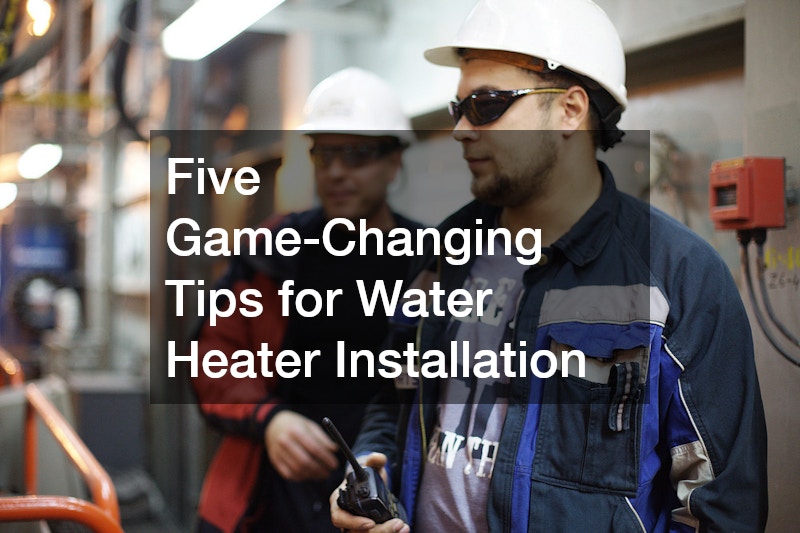Installing a water heater is one of those home improvement projects that can feel daunting, but it is crucial for the comfort and efficiency of your household. A well-installed water heater ensures a steady supply of hot water and maximizes energy efficiency, which is essential for daily activities like showering, cooking, and cleaning. Whether you are upgrading your current unit or tackling this project for the first time, there are some vital tips and tricks that can make the process smoother and more efficient. The right installation not only improves performance but can also reduce utility bills and prevent future repairs. Here, we’ll explore five transformative tips for water heater installation, helping you to complete the job with confidence and precision. With a little preparation and understanding, you can avoid common pitfalls and make informed decisions, ensuring that your new water heater works efficiently for years to come.
1. Choose the Right Type of Water Heater
One of the most crucial steps in installing a water heater is selecting the right type for your needs. The two primary types of water heaters are tankless and tank-style. Tankless heaters can be more energy efficient and provide an endless supply of hot water, making them a popular choice for many homeowners. However, they often have a higher upfront cost than traditional tank-style heaters. Understanding the size of your household and your typical water usage will help you decide which type of heater is the best fit for your home.
2. Consider the Correct Size and Capacity
Once you’ve chosen the type of water heater, sizing becomes a critical factor. A water heater that is too small won’t provide enough hot water, while one that is too large will waste energy. The rule of thumb is to consider the number of people in your household and their daily hot water usage. Water heaters are rated by capacity in gallons for tank-style models and flow rate for tankless models. Properly sizing the water heater ensures you have adequate hot water supply without unnecessarily increasing energy consumption.
3. Professional Installation vs. DIY
Deciding whether to hire a professional or attempt a DIY installation is another significant consideration. Professional installers bring expertise and experience, ensuring that the installation is done safely and in compliance with local codes. That said, if you opt for a DIY approach, be sure you are comfortable working with plumbing and electrical systems. Investing in a professional installation can also provide peace of mind and often comes with warranty coverage that might not be available with a DIY install.
4. Pay Attention to Ventilation and Placement
The place where you install your water heater is crucial, particularly for models that require ventilation. Proper ventilation is vital to ensure safe operation, especially for gas-powered heaters that emit carbon monoxide. Ensure that your water heater is installed in a space with sufficient airflow and follow the manufacturer’s guidelines for clearance distances. Incorrect placement and ventilation can lead to inefficient operation and potential safety hazards, so these factors should not be overlooked.
5. Regular Maintenance and Monitoring
After installation, ongoing maintenance is key to extending the life of your water heater and maintaining its efficiency. Regularly checking for leaks, draining the tank to remove sediment buildup, and inspecting the anode rod are simple yet effective ways to maintain your water heater. Additionally, keeping an eye on the temperature setting can optimize your energy use. Most manufacturers recommend setting the temperature to 120 degrees Fahrenheit to achieve optimal performance and efficiency. Adding a habit of regular maintenance can save you in repair costs down the line and ensure that your water heater runs smoothly.
Water heater installation doesn’t have to be a stressful endeavor once you understand these game-changing tips. By selecting the right model, ensuring proper sizing, considering professional help, choosing the right location, and committing to regular maintenance, you can enjoy a reliable supply of hot water with maximum efficiency. Each step of the process has its own set of considerations that, when properly addressed, can significantly improve both immediate installation outcomes and long-term satisfaction. A well-planned installation not only ensures optimal performance but also extends the lifespan of your water heater, saving you from costly repairs or replacements in the future. Additionally, understanding energy efficiency and safety protocols can lead to significant cost savings and peace of mind. With a strategic approach and these insights, you’ll be well on your way to enjoying a well-functioning water heater and a comfortable home environment. By taking these precautions, you’ll create a seamless experience, resulting in fewer headaches and a smoother process overall.
.

